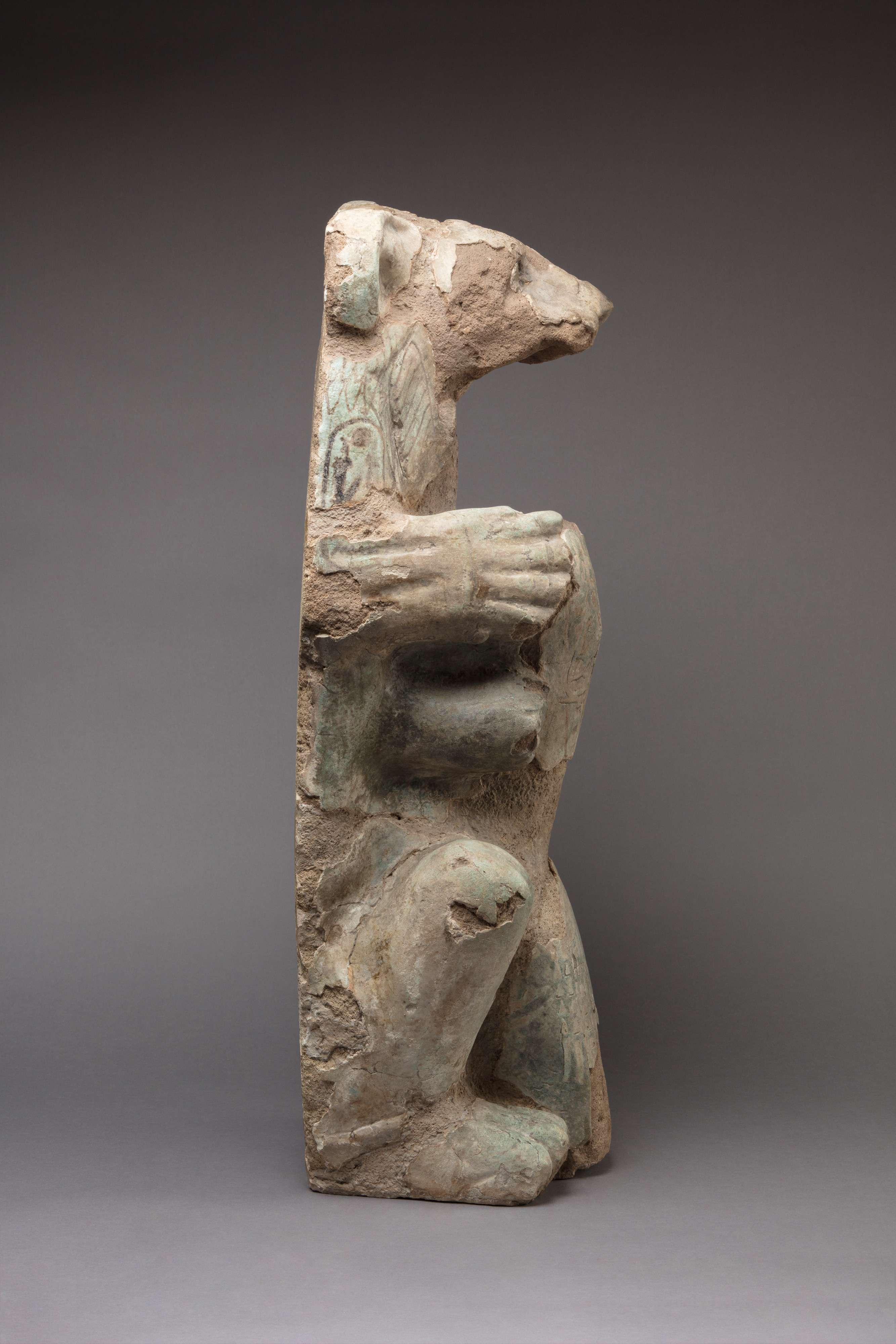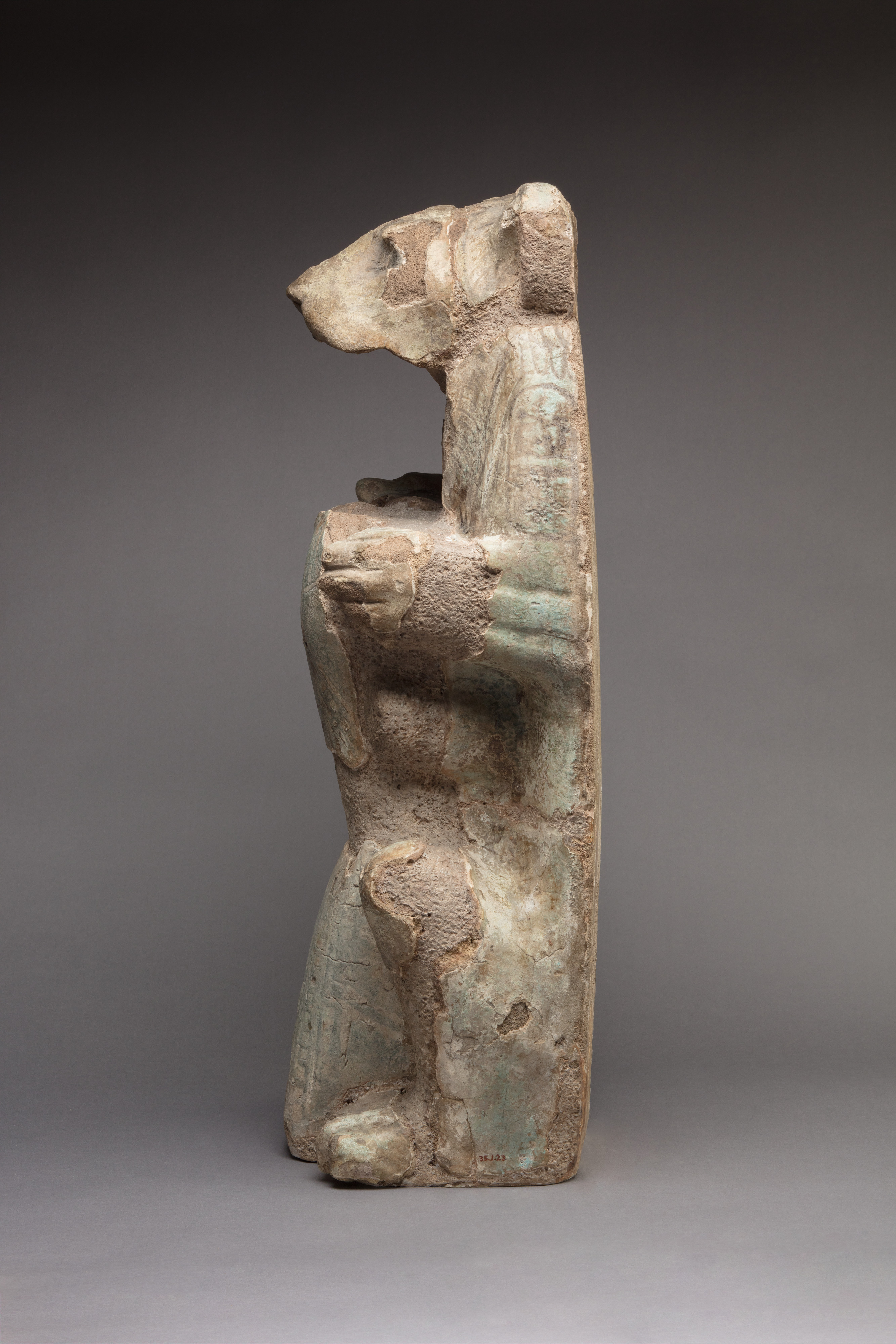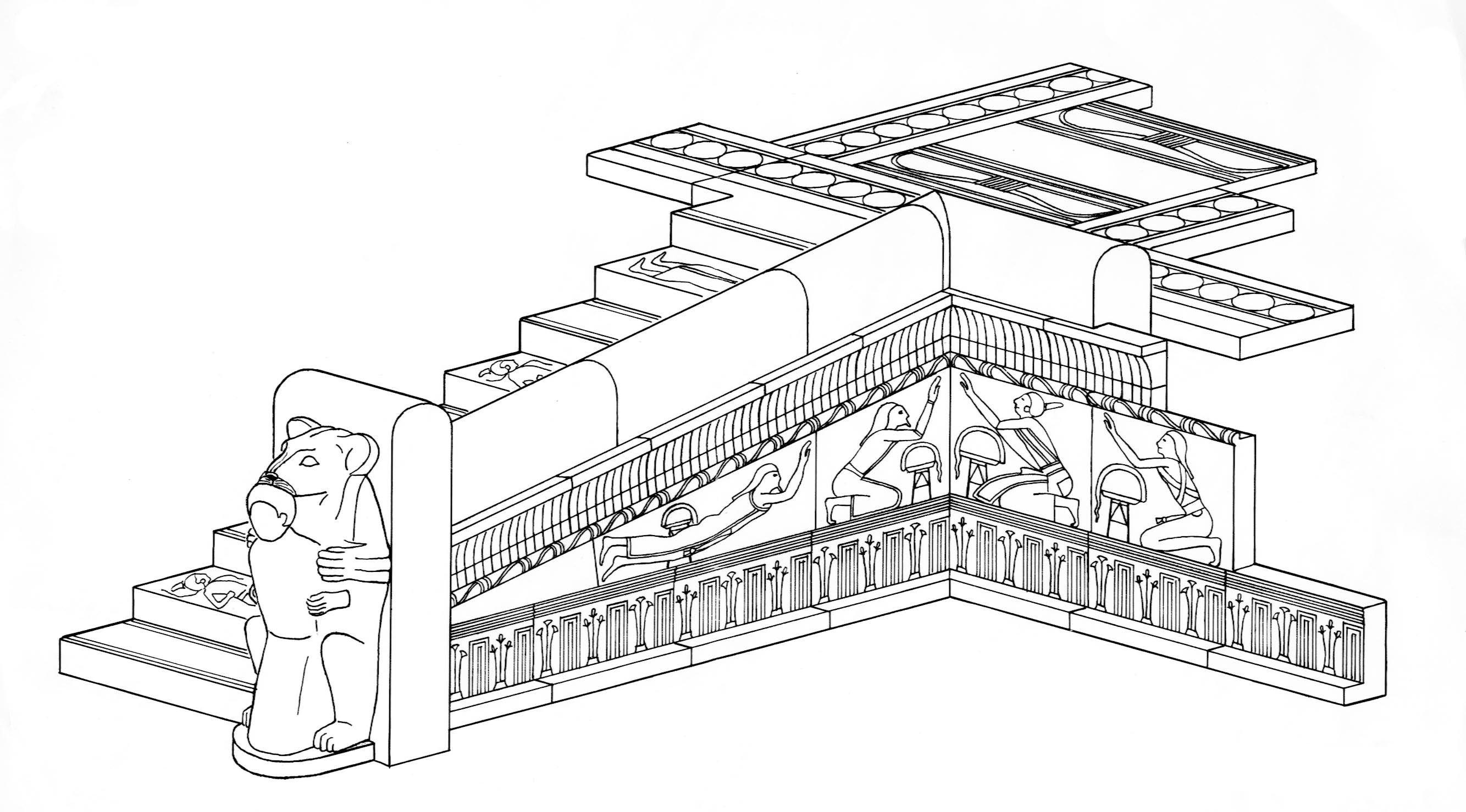Lion Subduing a Prince of Kush
New Kingdom, Ramesside
This tile once decorated the palace of Ramesses II in Piramesse, which he made into one of the greatest royal cities of ancient Egypt. Thanks to the royal favor and its strategic location, Piramesse soon became an important international trade center and a cosmopolitan metropolis, boasting a harbor, a military base, and temples dedicated to various gods like Amun-Re-Harakhty-Atum, Seth, Astarte, etc. Poems were written in the city's praise, and its name, which translates as "The House of Ramesses, Beloved of Amun, Great of Victories" when fully written, came to us through the Old Testament as ‘Raamses.’
The tiles bear the names of Seti I, Ramesses II and later Ramesside kings, who renovated the palace and changed its decoration through the reigns. New tiles were made, and the old tiles may be have been dismantled and buried together. Based on the tiles, we can still reconstruct quite a number of the features of the palace that are now completely lost, including throne podiums, steps, windows of appearance, and faience sculptures.
This composite figure of a lion sitting on his haunches with the head of a foreigner in his mouth was one of several that probably functioned as newel posts at the bottom of the stairways mounting up to the platform of the throne dais. The cartouches of Ramesses II appear on the shoulders of the lion. The manacled captive can be identified as a Prince of Kush by the remains of the inscription on his skirt which reads: "The wretched Chief says (Give) to Kush the breath (of life)!"
Due to rights restrictions, this image cannot be enlarged, viewed at full screen, or downloaded.
This artwork is meant to be viewed from right to left. Scroll left to view more.






